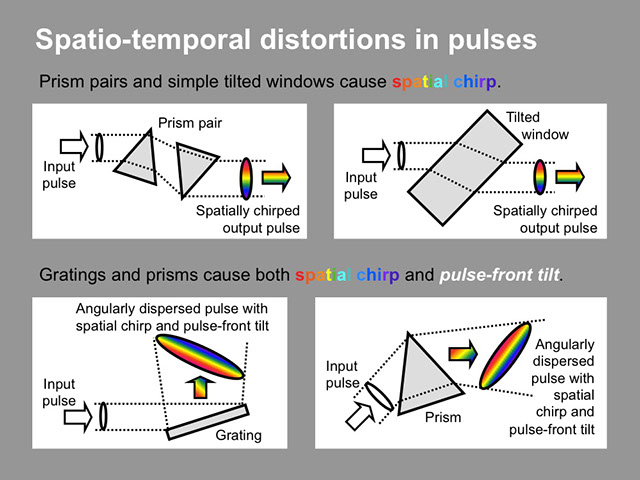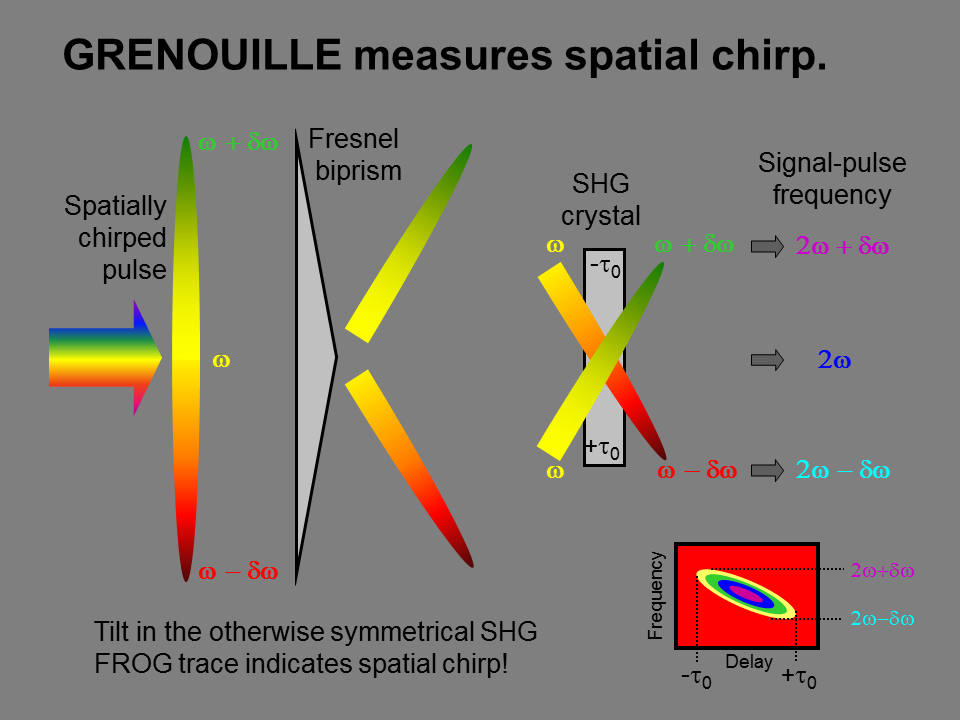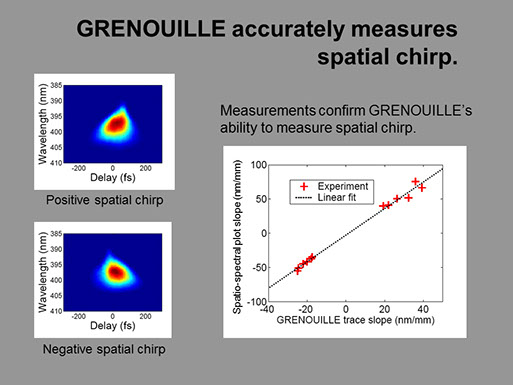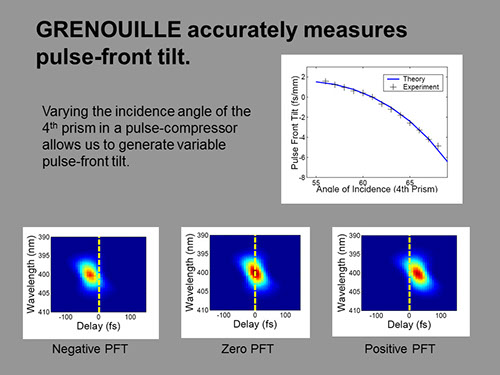Spatio-Temporal Distortions and
How We Measure Them
So GRENOUILLE works well, and life is great; we can measure the temporal and spectral intensity and phase of ultrashort laser pulses better and more easily than we ever imagined. But there's more to an ultrashort pulse than its temporal or spectral behavior. There are some pesky spatial dimensions also. Of course, we can easily measure the beam spatial profile. But that's not enough. The intensity and phase can vary in space, or, equivalently, the spatial profile can vary in time! A pulse can have spatio-temporal distortions.
Below are schematics of the two most common spatio-temporal distortions in ultrashort laser pulses: spatial chirp and pulse-front tilt. Spatial chirp is fairly obvious (although Pink Floyd got it wrong on the back side of their famous Dark Side of the Moon album cover). Pulse-front tilt is actually easy to understand, too. Note that the part of the pulse that impinges on the near side of the diffraction grating in the figure below emerges first and so precedes the part of the beam that has to propagate all the way to the back edge of the grating. Pulse-front tilt from a prism is a little trickier, but it involves the difference between phase and group delays. Suffice it to say that propagation through a prism also tilts a pulse. And it turns out that all optics that introduce angular dispersion also introduce pulse-front tilt. We've actually tilted a pulse by 89.999 degrees using an etalon.

Spatio-temporal distortions can be serious problems. You can't focus such a distorted pulse very well, so the intensity at a focus is greatly reduced. The spatial resolution of a microscope using such a pulse is also greatly reduced.
Now, you're probably wondering: most ultrafast lasers have angular-dispersive optics, like prisms and gratings, in them. So wouldn't their output beams have a lot of these spatio-temporal distortions? Well, not if the laser is properly aligned because the laser designer carefully compensates for them. But that's only when the laser is perfectly aligned. And we all know how easy it is to mis-align a laser. So suffice it to say that all ultrafast laser pulses have some spatio-temporal distortions in them, no matter what the laser salesman says. And if it doesn't when you buy it, it will someday when you breathe too close to the laser and mis-align it.
So, you're wondering, is it at least possible to measure spatial chirp and pulse-front tilt, so we can know when to re-align our laser or other optics in order to remove these effects? Fortunately, the answer is yes, and, you guessed it, GRENOUILLE measures them both!
Below is a graphic that shows what happens when you send a spatially chirped pulse into a GRENOUILLE. Note that the ordinarily symmetrical measured GRENOUILLE trace becomes tilted. And the tilt is directly proportional to the spatial chirp.

And what about pulse-front tilt? Yes, GRENOUILLE measures it, too! A tilted pulse yields a measured GRENOUILLE trace that is displaced along the delay axis. And the displacement is directly proportional to the pulse-front tilt.

In the next couple of figures, you can see examples of GRENOUILLE measurements of these distortions.

GRENOUILLE measurements of pulses with spatial chirp. Note that GRENOUILLE can also measure the sign of the spatial chirp.
GRENOUILLE measurements of pulses with pulse-front tilt (and spatial chirp; when you have one spatio-temporal distortion, you usually have others, too). Note that GRENOUILLE can also measure the sign of the spatial chirp.

PDF summary of Spatio-Temporal Distortions
Copyright © 2022 Swamp Optics, LLC. All Rights Reserved.



